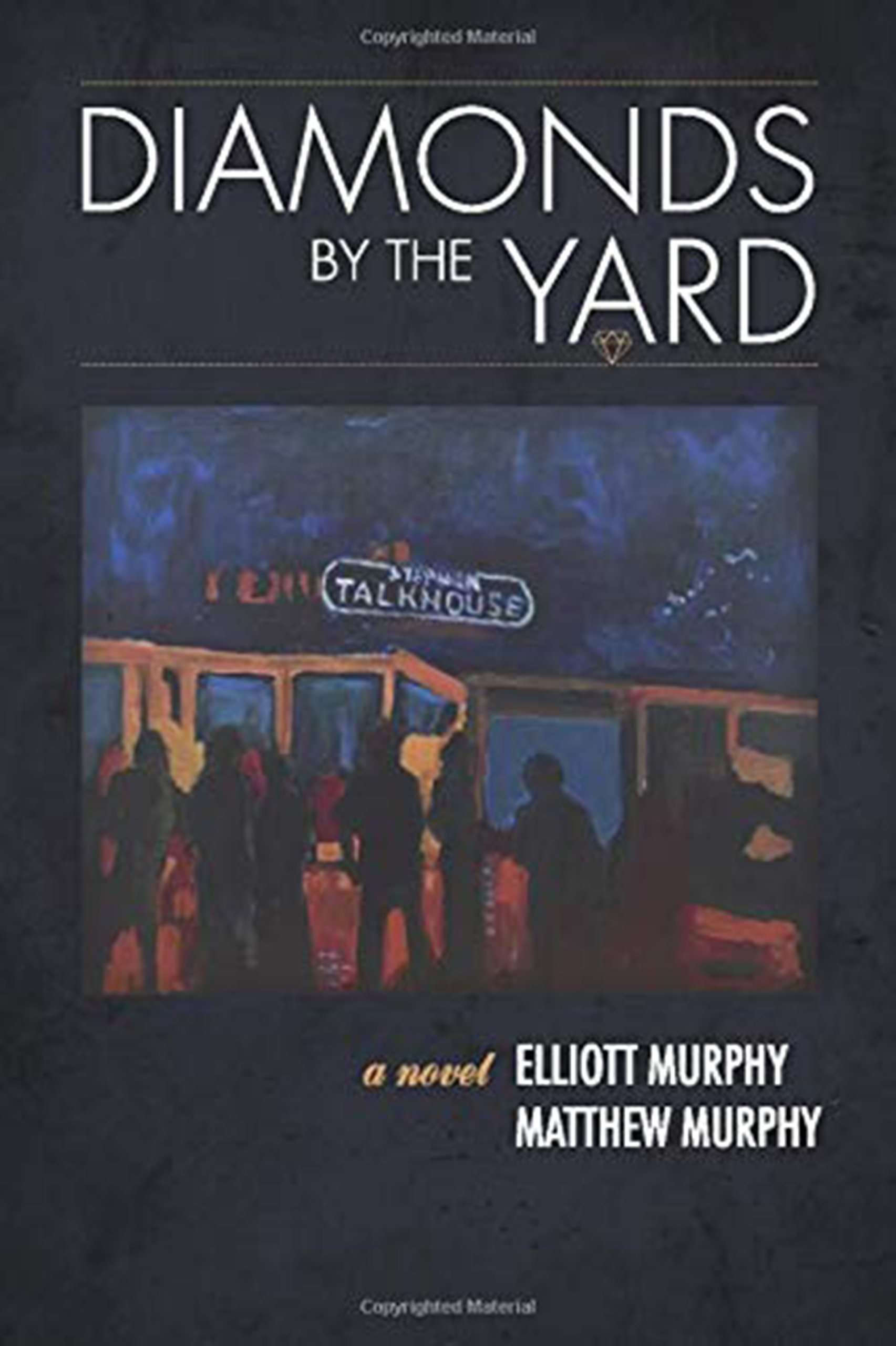Diamonds Are A Guy’s Best Friend


A beach read for guys? You bet, although many women may indeed enjoy a book where the beach could as easily be a bar. A main reason to pick up “Diamonds By the Yard” begins with its cover — an impressionistic painting (by Brendan O’Connell) of The Stephen Talkhouse, which signals the local appeal of this fun, savvy novel about the mid-’70s music scene by the Murphy brothers (Elliott and Matthew), whose Long Island roots extend all over the East End, but particularly to the Talkhouse, and is still going strong.
It was just late last year that this iconic music-oriented watering hole on Main Street in Amagansett welcomed back 69-year-old singer-composer and creative writer Elliott Murphy, with over 35 albums to his name, shortly after he was inducted into the Long Island Music Hall of Fame by his old pal, Billy Joel. Matthew, a “legendary tour manager” who can trace five decades of success in the business, is also still with it, and though their sister Michelle is not alluded to in the book, she is a community-based well-known artist. Talk about a book with regional connections!
In “Diamonds By the Yard,” the Murphys give Murphy’s Law a spin: Anything that can go wrong, will, but the novel also shows that sometimes talent and perseverance can prevail, for a while, with luck, and the right connections, as it does for protagonist Lee Franklin, a fatalist as much as a fantasist. Lee, who hails from the Midwest, is smart but naïve, (until he’s no longer naïve). A nice guy, it’s nonetheless disquieting to read that he faked his 4F way out of Vietnam.
Although the novel coolly resurrects that hard time in New York (“Ford to City: Drop Dead”), when cocaine widely infiltrated clubs, the entertainment industry, and high-end society in LA, New York, and the Hamptons, it could be said to be a valentine to that dangerous and seductive era (“The zeitgeist was extreme”) because of the music.
“Looking back, one can only say that in spite of all its decadence and fiscal problems, New York City in 1975 never seemed so exciting, so enticing, so vibrant before, where everyone who wanted to was going to be famous and rich, or at least look that way, for a brief, shining moment.” As David Bowie put it that same year in his hit “Fame”: “What you want is in the limo . . . What you get is no tomorrow . . .”
The story begins in the Hamptons with Lexi Langdon, a spoiled, beautiful, extremely rich young woman from Houston (Langdon Industries “was the largest maker of waste disposal vehicles in the United States”), whose favorite piece of jewelry (best seen against her naked body) is the made-to-order Tiffany necklace of the title which doesn’t really figure in the tale until it becomes an object to steal by her down-and-desperate husband Ray Arthur, an A & R exec in deep to the Mafia.
Filled with all manner of East End details — sights, restaurants, houses, history, high-end extravagant parties — the novel keeps to the third-person until Lee Franklin’s italicized ruminations kick in, as they do throughout this name-dropping romp. Think “The Great Gatsby,” with Nick Carraway reinvented, in part, as a mostly out-of-work singer-songwriter, but also, in part, Jay Gatsby. When Lee spots Lexi at Indian Wells beach one afternoon, the most gorgeous creature he’s ever seen, he says her voice, as Jay observed of Daisy Buchanan’s, was “full of money” (the third-person narration describes it as “a cowgirl cum Scarlett O’Hara accent”). Well, of course Lexi hangs out with Calvin, Diana, Andy, Truman. Frank and LBJ’s daughters. She knows everything and everyone in the one-percent league.
The novel resonates with memoir-type authenticity (check out the riotous scenes at CBGB), though it’s all too long and a bit much, especially with back stories and cameo appearances of the rich and (in)famous. But music insiders of a certain age will likely find the book a nostalgic hoot. What endears Lee to the reader is his basic decency and uncompromising regard of music, but he’s finally not Nick Carraway, and the book makes no move to be a cultural critique of America at a pivotal time.
There’s also a matter of style. Though nouns come laden with too many (and predictable) adjectives, the book does come memorably alive when the authors turn their attention to f-word-inflected mobster dialogue, at once horrific and hilarious. For sure, there ought to be a reading at The Stephen Talkhouse.



